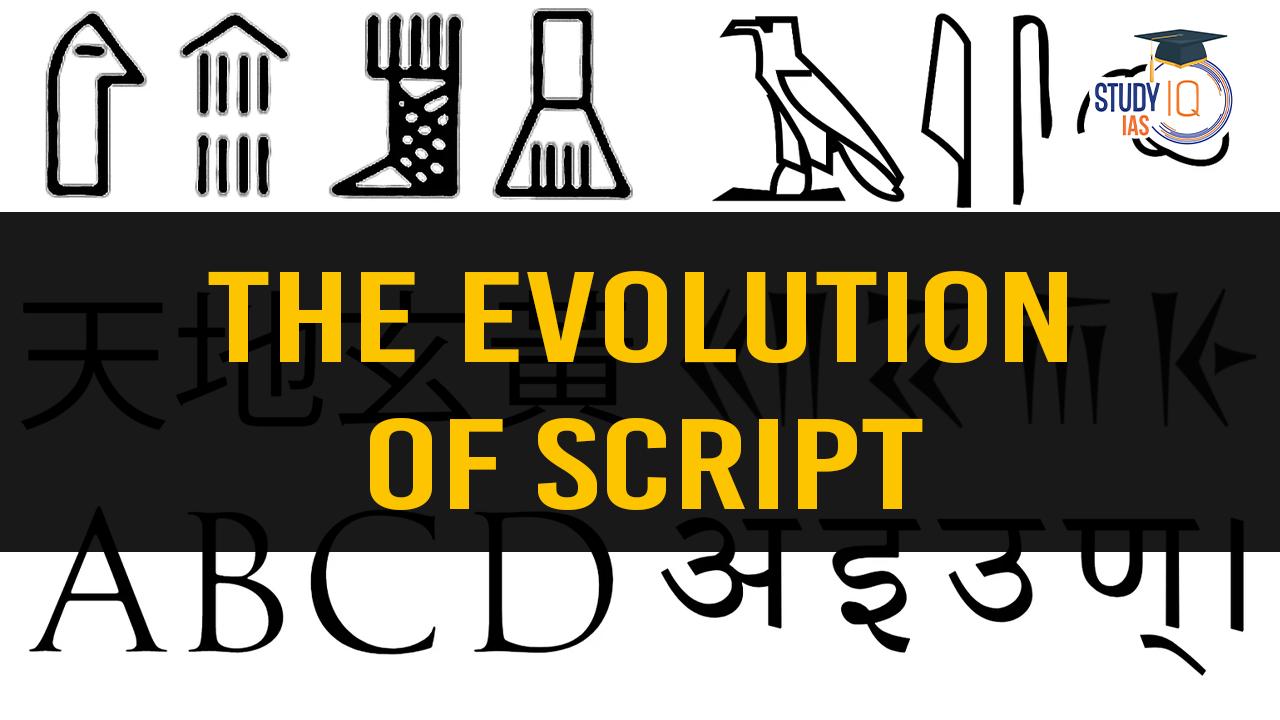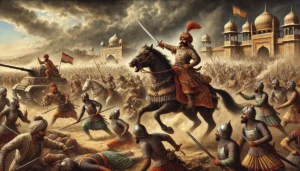Table of Contents
Language has been a cornerstone of human communication since the dawn of civilization, and script serves as its crucial driver. While spoken language can carry ideas and emotions across two or three generations, the written script enables this knowledge to endure through millennia. Before the advent of script, historians relied on remnants and artifacts to infer the lives of early humans. However, the creation of script revolutionized the study of history, transforming it from mere speculation into a systematic understanding of ancestral experiences.
The Necessity and Evolution of Script
The origin of script is a prime example, emerging as early humans sought to preserve their observations and knowledge.
- Pictographic Script: Early humans used pictographs to represent daily activities and objects.
- Ideographic Script: As human emotions and actions grew complex, symbolic representations emerged. For instance, the Sami script’s alphabets—Aleph (bull), Bet (house), Gimmel (camel), and Dalet (door)—were derived from pictorial symbols.
The Development of Writing Systems
By 2700 B.C., the ancient Egyptians had developed hieroglyphic writing, influencing the creation of the first alphabet used for Semitic languages. The Semitic alphabet, used in the Canaan region (modern-day Lebanon, Israel, and surrounding areas), later evolved into the Phoenician alphabet.
- Phoenician Alphabet: Adopted by maritime city-states, it spread across the Mediterranean through trade.
- Impactful Variants: Two significant derivatives were:
- Aramaic Alphabet: Official script of the Persian Empire by the 7th century B.C.
- Greek Alphabet: Influential in shaping Western writing systems.
Scripts in the Indian Subcontinent
The Aramaic alphabet introduced by the Persians influenced scripts in India:
- Kharosthi Alphabet: Used in Punjab, Gandhara, and Sindh (300 B.C.–400 A.D.).
- Brahmi Alphabet: Predating 500 B.C., it became the dominant script, evolving into a versatile system for languages like Sanskrit and Prakrit.
The Brahmi script, enriched during the Gupta dynasty (4th–5th centuries), replaced Kharosthi and became the foundation for many scripts across the Indian subcontinent.
The Gurmukhi Alphabet
The Gurmukhi alphabet, used to write Punjabi, originates from the Landa script, itself rooted in the Brahmi script. Guru Angad (1539–1552), the second Sikh Guru, refined and standardized the Gurmukhi script for composing Sikh scriptures, leading to its name, which translates to “from the Guru’s mouth.”
- Composition:
- 32 Consonants (ਵਿਆੰਜਨ) and 3 Vowels (ਸਵਰ).
- Symbols for nasal sounds: ਬਿੰਦੀ and ਟਿੱਪੀ.
- A duplication symbol: ਅੱਧਕ.
- Four conjuncts: three subjoined forms (ਰ, ਹ, ਵ) and one half-form (ਯ).
- Six additional characters with a bindi (dot) added to existing consonants for new sounds.
- Languages in Sikh Scriptures: The Guru Granth Sahib, the holy Sikh text, includes several languages—Persian, Sanskrit, Brajbhasha, and Khariboli—all written in the Gurmukhi script.
Shahmukhi Script
In Pakistan, Punjabi is traditionally written in the Shahmukhi script, a modified Persian Nasta’liq alphabet.
- Characteristics:
- Written from right to left, unlike Gurmukhi’s left-to-right orientation.
- Known as “from King’s mouth,” reflecting its royal patronage during Muslim and Mughal rule.
From the earliest pictographs to modern-day alphabets, the evolution of script highlights humanity’s relentless pursuit of knowledge preservation. The Gurmukhi and Shahmukhi scripts stand as testaments to this journey, each contributing uniquely to the cultural and literary heritage of the Punjabi language.
Punjab PCS Important Links
| Punjab PCS Important Links | ||
| Punjab PCS Notification | Punjab PCS Apply Online | Punjab PCS Syllabus |
| PPSC Eligibility Criteria | PPSC PYQ | Punjab PCS Notes |


 Buddhism History, Origin, Sect, Councils...
Buddhism History, Origin, Sect, Councils...
 Rana Sanga: The Fearless Rajput King and...
Rana Sanga: The Fearless Rajput King and...
 Vikramshila University Revival, Location...
Vikramshila University Revival, Location...













